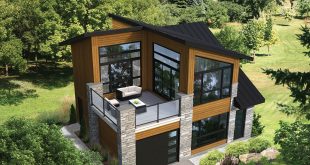Challenges and Opportunities of Using “Old Design House Plans”
Old design house plans – Repurposing old house plans presents a unique blend of challenges and rewards. While older designs often possess undeniable charm and character, adapting them to modern needs and building codes requires careful consideration and planning. Successfully navigating these challenges unlocks the opportunity to create a unique and potentially sustainable home.
Potential Structural Challenges in Older House Plans
Older house plans often incorporated building techniques and materials that differ significantly from modern standards. For instance, foundations might be less robust, lacking the reinforcement needed to withstand modern seismic codes. Framing techniques could be less efficient, potentially leading to issues with insulation and structural integrity. Furthermore, the absence of modern energy-efficient materials and designs can lead to higher operating costs.
Careful assessment by a structural engineer is crucial before undertaking any renovation or construction based on an older plan. This assessment should address foundation stability, load-bearing capacity of walls and floors, and the overall structural soundness of the design in relation to current building regulations. Ignoring these aspects could result in costly repairs or even safety hazards.
Updating Older House Plans to Meet Modern Building Codes
Bringing an older house plan up to code necessitates a thorough review by a qualified architect or building professional. This includes verifying compliance with local zoning regulations, accessibility requirements (ADA compliance), fire safety standards, and energy efficiency guidelines. Updates may involve altering the design to incorporate features such as wider doorways, accessible bathrooms, updated electrical systems, and improved insulation.
The cost of these modifications should be factored into the overall budget. A common example would be the need to upgrade electrical wiring to handle modern appliances and increased power demands, which might involve significant rewiring throughout the house. Similarly, older plumbing systems often require complete replacement to meet current standards.
Incorporating Sustainable Design Elements into Older House Plans
Older house plans offer a unique opportunity to integrate sustainable design principles. Many older homes were built with smaller footprints and higher ceilings, features conducive to natural ventilation and passive solar heating. These elements can be enhanced with the addition of modern sustainable technologies such as solar panels, rainwater harvesting systems, and energy-efficient windows and insulation. The use of reclaimed or recycled materials in construction can further enhance the sustainability of the project.
For example, reusing salvaged lumber from demolition projects can significantly reduce the environmental impact of the construction process. Careful consideration of the home’s orientation in relation to the sun and prevailing winds can also optimize natural lighting and ventilation, reducing reliance on artificial heating and cooling.
Adapting Older House Plans to Modern Lifestyles and Family Needs, Old design house plans
Older house plans often lack the open-plan layouts and flexible spaces favored in modern homes. Adapting an older plan requires careful consideration of family needs and modern living styles. This might involve removing non-load-bearing walls to create a more open floor plan, adding or expanding rooms to accommodate a growing family, or updating kitchen and bathroom layouts to improve functionality and accessibility.
For example, a small, compartmentalized kitchen might be redesigned to create a larger, more open space integrated with a dining or living area. Similarly, outdated bathroom layouts can be modernized to include larger showers, updated fixtures, and better accessibility features.
Resources for Finding and Adapting Old House Plans
Finding and adapting old house plans requires access to various resources. Careful research is essential to ensure the chosen plans are suitable for the intended location and lifestyle.
- Architectural salvage yards: These yards often contain original blueprints and plans for older homes, providing a wealth of inspiration and potential designs.
- Online archives and databases: Many online resources offer access to digitized architectural plans and historical building records, offering a wider selection of potential options.
- Local historical societies and libraries: These institutions frequently possess collections of local architectural drawings and historical building information, offering valuable context and insights.
- Architectural historians and preservationists: Consulting with experts in these fields can provide guidance on adapting older plans and preserving historical features while meeting modern building codes.
- Licensed architects and designers: Their expertise is invaluable in adapting old plans to current building codes, incorporating sustainable design principles, and addressing modern lifestyle needs.
Detailed FAQs
Are old house plans structurally sound?
The structural soundness depends on the age, materials, and maintenance of the original structure. Thorough inspection by a qualified professional is crucial before undertaking any renovation or construction based on an old house plan.
How expensive is it to adapt an old house plan?
Costs vary significantly based on the extent of modifications needed, materials used, and labor costs in your region. Budgeting and detailed cost estimates from contractors are essential.
Can I find free old house plans online?
While some resources offer free plans, many are incomplete or require significant adaptation. Be cautious about the accuracy and completeness of freely available plans.
What are the common issues with old house plans?
Common issues include outdated plumbing and electrical systems, lack of insulation, and smaller room sizes compared to modern standards. Addressing these issues is crucial for modern functionality.
Old house plans often present unique challenges for modern builders, requiring careful consideration of structural integrity and updating outdated systems. For a fun and insightful way to explore design possibilities, try architect life: a house design simulator ; it’s a great tool to visualize potential renovations before committing to real-world changes on an old house plan. Understanding the limitations and possibilities of older designs is crucial for successful restoration projects.
 Interior Living
Interior Living
